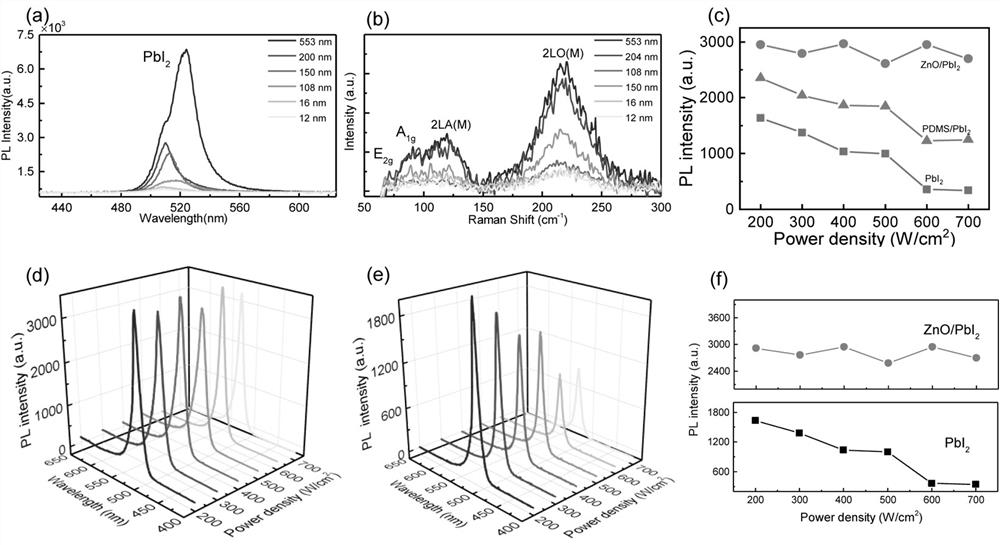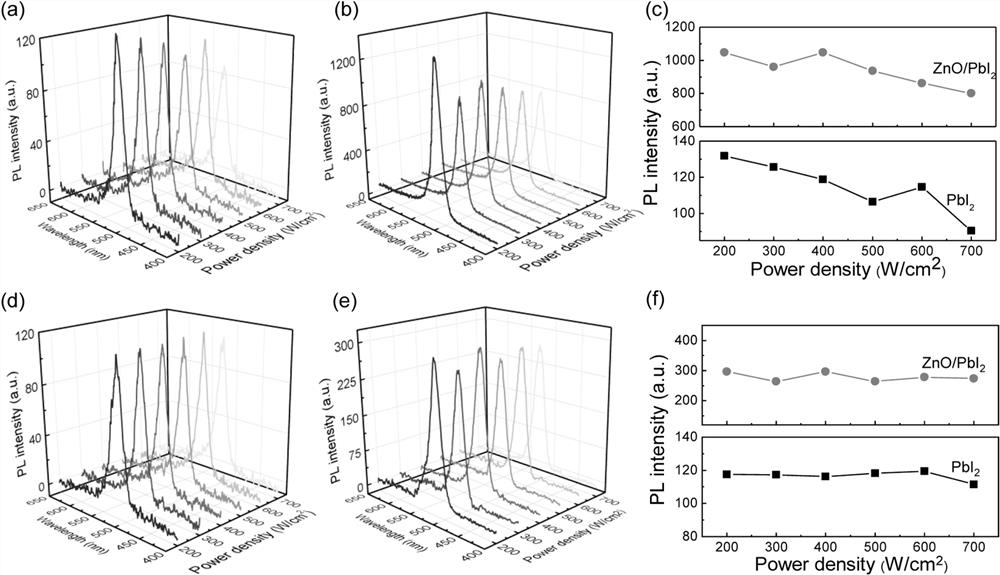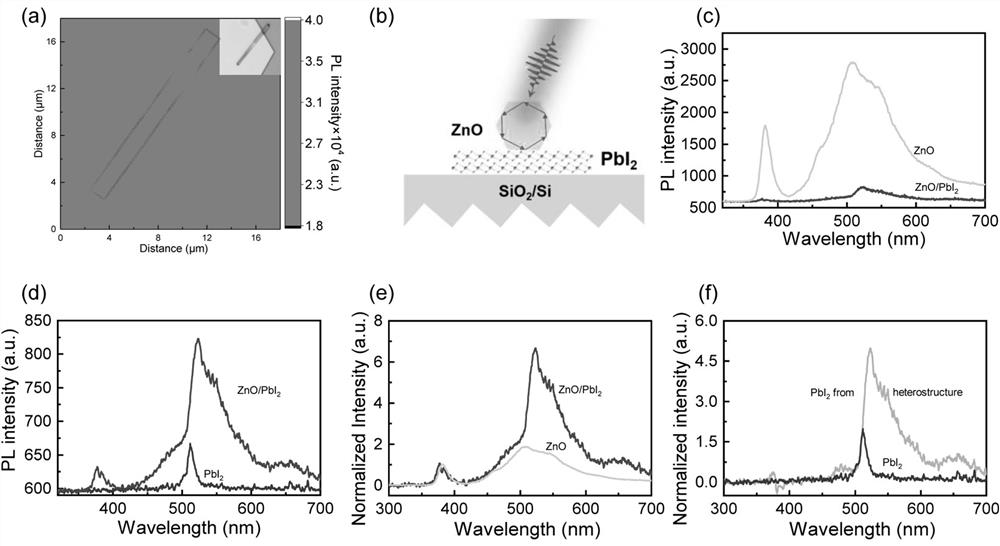Method for improving light stability and fluorescence intensity of two-dimensional lead iodide
A fluorescence intensity, lead iodide technology, applied in chemical instruments and methods, luminescent materials, etc., can solve the problems of low thermal conductivity and can not improve the photostability of PbI well
- Summary
- Abstract
- Description
- Claims
- Application Information
AI Technical Summary
Problems solved by technology
Method used
Image
Examples
Embodiment 1
[0022] Example 1 Preparation of zinc oxide / lead iodide nano-heterojunction
[0023] 1. PbI 2 Synthesis of Nanosheets
[0024] PbI was synthesized by dissolution and recrystallization 2 Nanosheet; the specific operation is as follows:
[0025] 1) PbI with a purity of 99.9% 2 The powder was dissolved in secondary deionized water to prepare a 1mg / mL solution, heated and stirred at 110°C until completely dissolved to obtain PbI 2 aqueous solution;
[0026] 2) Place PbI at room temperature2 One hour after the aqueous solution, use a high-precision pipette to draw 50 μL of the solution, and drop it on the cleaned SiO 2 / Si substrate (1cm×1cm), after 5-10 minutes, suck out the excess liquid with a straw to obtain PbI with different sizes, shapes, and thicknesses. 2 Nanosheets;
[0027] 2. Synthesis of ZnO nanowires
[0028] ZnO nanowires were prepared using a typical hydrothermal method, the specific operation is as follows:
[0029] 1) Dissolve zinc acetate and hexamethylen...
Embodiment 2
[0033] Example 2 Characterization and detection of lead iodide nanosheets
[0034] Our analysis of the prepared PbI 2 The nanosheets were subjected to PL and Raman spectroscopy measurements to further characterize PbI at different thicknesses 2 Properties of nanosheets at room temperature; figure 1 (a), as the thickness decreases from 553 nm to 12 nm, the PbI 2 The intensity of the PL peak around 510nm gradually weakens. With PbI 2 As the nanosheet becomes thinner, the light absorption decreases, and the PL quantum efficiency also decreases. At the same time, as the thickness becomes thinner to the monolayer, the energy bandgap changes from direct to indirect. Unlike the PL spectrum, PbI 2 The Raman spectrum is too weak at room temperature to be identified, so the excitation power must be increased to irradiate PbI 2 slices to obtain observable Raman signals. Due to PbI 2 The photostability of nanosheets is poor, and high excitation power inevitably damages their cryst...
Embodiment 3
[0035] Example 3 ZnO / PbI nano-heterojunction effect experiment
[0036] 1. Laser irradiation experiment
[0037] PB 2 An important property that the protective layer needs to have is high light transmittance to ensure that the photon absorption of the protective layer is minimized; the absorption edge of the ZnO nanowire is located at about 380nm, while the PbI 2 The absorption edge of the nanosheets is located at around 520nm; obviously, the wider forbidden band width of ZnO can be PbI 2 Provides an ideal photon absorption window in the near UV and visible light. On the theoretical basis, we carried out corresponding irradiation experiments to verify the effect of ZnO nanowires on PbI 2 The protective effect, as shown below; respectively for the non-covered PbI 2 Nanosheets and ZnO / PbI 2 The heterojunction is irradiated with variable power laser, and then the PL spectrum of the irradiated sample is collected using an excitation light source of uniform power. Both the ir...
PUM
 Login to View More
Login to View More Abstract
Description
Claims
Application Information
 Login to View More
Login to View More - R&D
- Intellectual Property
- Life Sciences
- Materials
- Tech Scout
- Unparalleled Data Quality
- Higher Quality Content
- 60% Fewer Hallucinations
Browse by: Latest US Patents, China's latest patents, Technical Efficacy Thesaurus, Application Domain, Technology Topic, Popular Technical Reports.
© 2025 PatSnap. All rights reserved.Legal|Privacy policy|Modern Slavery Act Transparency Statement|Sitemap|About US| Contact US: help@patsnap.com



